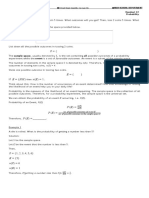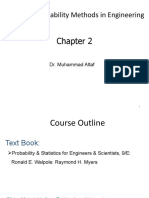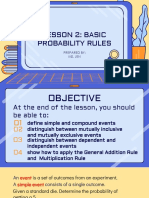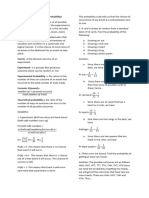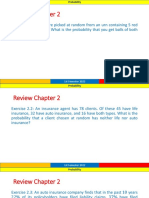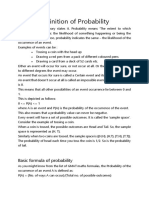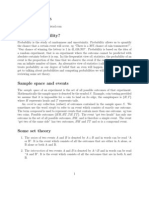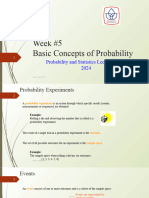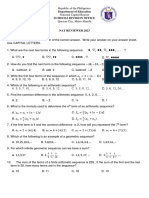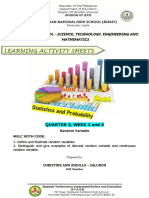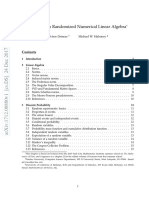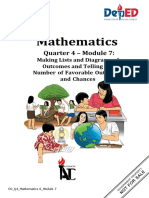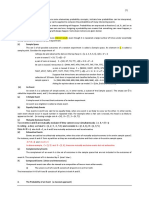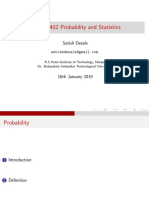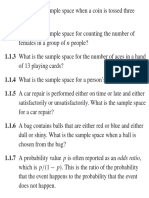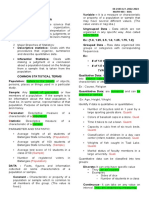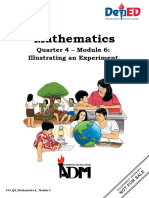5/21/2024
Probability &
Counting Rules
By: Dr. Farrokh Jaleel (IIU)
(Part III)
Bluman Chapter 4
Dr. Farrokh Jaleel
Probability &
05
Counting Rules
Table of Contents Summarize data
Sample Spaces & Addition Rules
01 02
Probability for Probability
By: Dr. Farrokh Jaleel (IIU)
Probability of compound events
Multiplication Rules &
03 Conditional
Probability 04 Counting Rules
≥ 2 sequential, independent
events
1
� 5/21/2024
The Multiplication Rule
If a coin is tossed and then a die is rolled, we can
By: Dr. Farrokh Jaleel (IIU)
find the probability of getting a head on the coin
and a 4 on the die
Because 1st
event doesn’t
affect 2nd
event
Some other examples…
By: Dr. Farrokh Jaleel (IIU)
1. Rolling a die and getting a 6, and then rolling a second die
and getting a 3
2. Drawing a card from a deck and getting a queen,
replacing it, and drawing a second card and getting a
queen
2
� 5/21/2024
When two events are independent, probability of
both occurring is
P(A and B) = P(A) . P(B)
First find the probability of each event occurring separately
Multiply the answers
Example:
If a coin is tossed twice, probability of getting two heads is:
Example
A coin is flipped and a die is rolled. Find the probability of getting a head on the coin and
a 4 on the die.
By: Dr. Farrokh Jaleel (IIU)
Solution
The sample space for the coin is: H, T; and for the die it is: 1, 2, 3, 4, 5, 6
P(Head and 4) = P(Head) x P(4) =
3
� 5/21/2024
Example
A card is drawn from a deck and replaced; then a second card is drawn. Find
the probability of getting a queen and then an ace
Solution
P(queen and ace) = P(queen) x P(ace) = . = = ≈ 0.006
Example
An urn contains 3 red balls, 2 blue balls, and 5 white balls. A ball is selected and its color
noted. Then it is replaced. A second ball is selected and its color noted. Find the
probability of each of following:
a. Selecting 2 blue balls
b. Selecting 1 blue ball and then 1 white ball
c. Selecting 1 red ball and then 1 blue ball
Solution
a. P(blue and blue) = P(blue) x P(blue) = ∗ = = = 0.04
b. P(blue and white) = P(blue) x P(white) = ∗ = = = 0.1
c. P(red and blue) = P(red) x P(blue) = ∗ = = = 0.06
4
� 5/21/2024
Rule 1 can be extended to three or more
independent events using the formula:
P (A and B and C and . . . and K) = P(A) . P(B) . P(C) ………….. P(K)
Practice
A poll found that 46% of Americans say they suffer great stress at least once a
week. If three people are selected at random, find the probability that all three
will say that they suffer great stress at least once a week
Solution
Let S denote stress. Then,
P(S and S and S) = P(S) . P(S) . P(S) = (0.46) x (0.46) x (0.46) ≈ 0.097
10
5
� 5/21/2024
A card is drawn from a deck and not
replaced, and then a second card is
drawn. What is the probability of
selecting an ace on the first card and
a king on the second card?
When two events are dependent, the probability of both occurring is:
P(A and B) = P(A) . P(B|A)
11
Dependent events
When outcome/occurrence
of 1st event affects
outcome/occurrence of 2nd event
such that the probability is changed,
the events called dependent events
12
6
� 5/21/2024
Dependent Events
1st Event affects 2nd Event
13
Some examples…
1. Drawing a card from a deck, not replacing it, and then drawing a second card
2. Selecting a ball from an urn, not replacing it, and then selecting a second ball
3. Being a lifeguard and getting a suntan
4. Having high grades and getting a scholarship
5. Parking in a no-parking zone and getting a parking ticket
14
7
� 5/21/2024
EXAMPLE
In a recent survey, 33% of the respondents said that they feel that they are
overqualified (O) for their present job. Of these, 24% said that they were
looking for a new job (J). If a person is selected at random, find the probability
that the person feels that he or she is overqualified and is also looking for a
new job
Solution
P(O and J) = P(O) . P(J|O) = (0.33) x (0.24) ≈ 0.079
15
Example 2
An Insurance Company found that 53% of the residents of a city had
homeowner’s insurance (H) with the company. Of these clients, 27% also had
automobile insurance (A) with the company. If a resident is selected at
random, find the probability that the resident has both homeowner’s and
automobile insurance with the Insurance Company
Solution
P(H and A) = P(H) x P(A|H) = (0.53) x (0.27) = 0.1431 ≈ 0.143
16
8
� 5/21/2024
Conditional
Probability
Probability of an event B in relationship
to an event A, such that event B occurs
P(B|A)
after event A has already occurred
17
18
9
� 5/21/2024
Example
A box contains black chips and white chips. A person selects two chips without
replacement. If the probability of selecting a black chip and a white chip is and the
probability of selecting a black chip on the first draw is , find the probability of selecting
the white chip on the second draw, given that the first chip selected was a black chip.
Solution
Let, B = selecting a black chip and, W = selecting a white chip
P(W|B) = =
( )
19
Probabilities for “At Least”
Use Multiplication rules
with
complementary event rule
to simplify solving probability problems
20
10
� 5/21/2024
Example
A person selects 3 cards from an ordinary deck and replaces each card after it is drawn. Find the
probability that the person will get at least one heart.
Solution
Use complementary rules
Let E = at least 1 heart is drawn, and 𝐸= no hearts are drawn
P(𝐸) = . . = . . = P(E) = 1 – P(𝐸) = 1 - = ≈ 0.578 = 57.8%
21
Need more
practice?
Try Exercises 4–4
22
11
� 5/21/2024
23
12

























